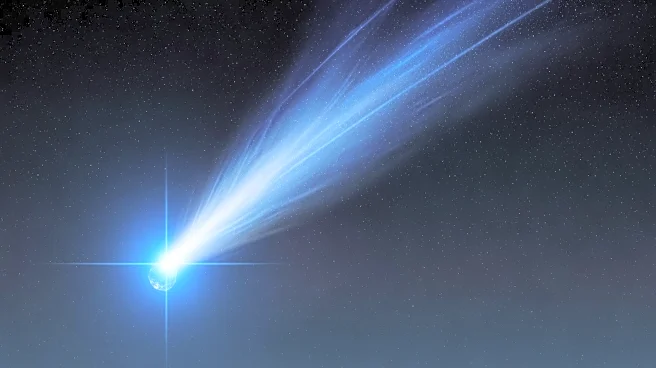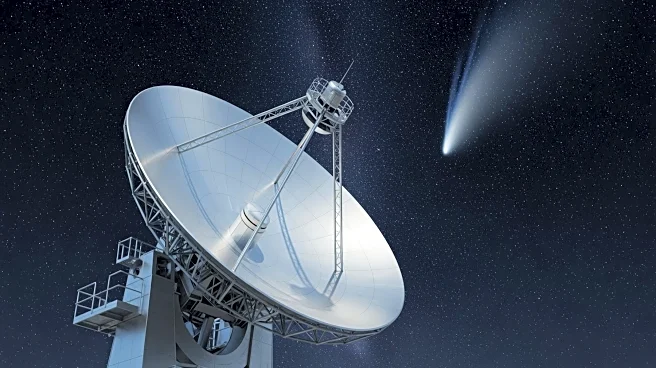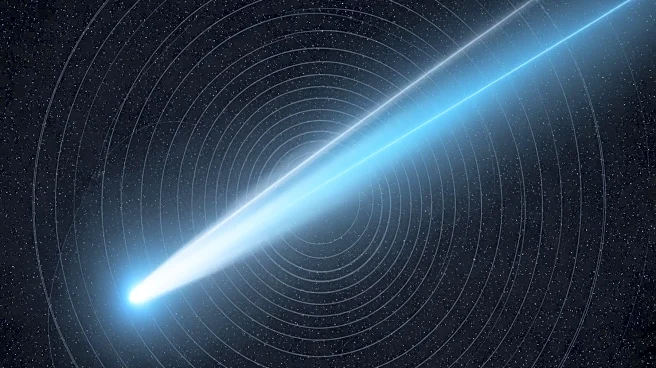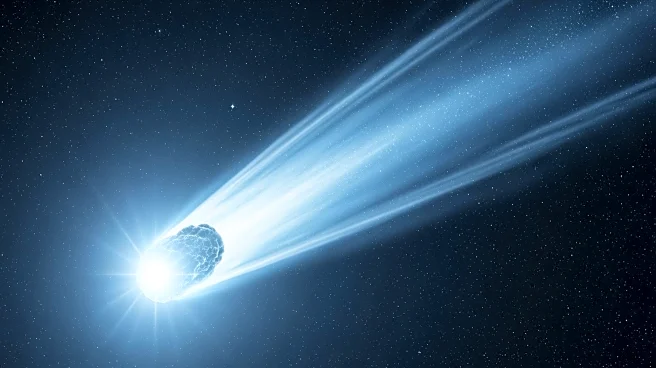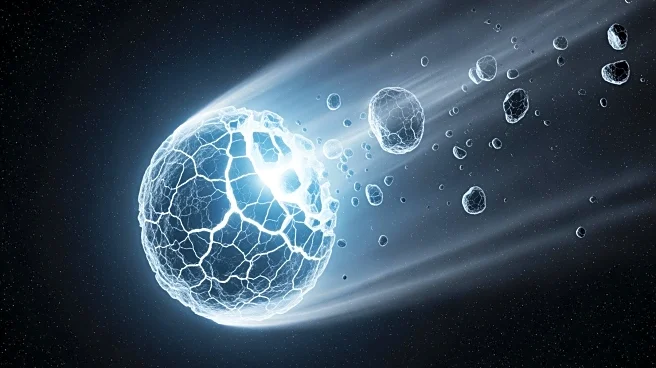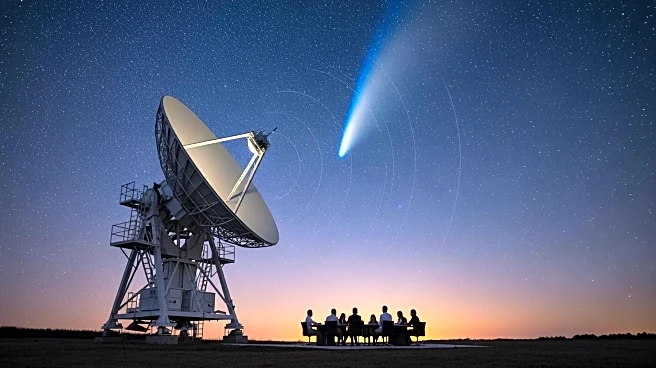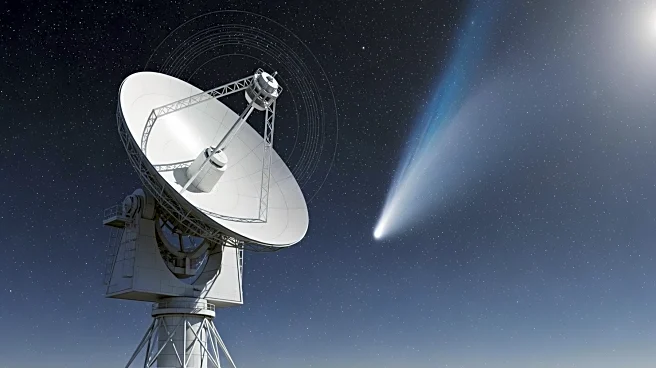What's Happening?
The MeerKAT radio array in South Africa has successfully detected a radio signal from the interstellar comet 3I/ATLAS, confirming its natural origin. The signal, observed on October 24, 2025, consists of hydroxyl (OH) absorption lines at 1665 and 1667
MHz, which are typical of water vapor being broken down by sunlight in a comet's coma. This detection supports the comet's classification as a natural, water-bearing object, countering previous speculations about its potential artificial origin. The comet, discovered on July 1, 2025, is the third known interstellar visitor, following 1I/ʻOumuamua and 2I/Borisov.
Why It's Important?
This discovery is significant as it provides concrete evidence of the natural composition of 3I/ATLAS, reinforcing the understanding of interstellar comets. The detection of OH lines aligns with previous optical and ultraviolet observations, confirming the comet's active water-bearing nature. This finding is crucial for astronomers as it helps refine models of cometary behavior and interstellar object characteristics. The confirmation of the comet's natural origin also dispels conspiracy theories about alien technology, emphasizing the importance of scientific evidence in understanding cosmic phenomena.
What's Next?
As 3I/ATLAS continues its journey, it is expected to reappear from solar glare, allowing for further observation. The comet will not pose any threat to Earth, maintaining a safe distance of approximately 1.8 astronomical units. Future observations, including potential radio checks when the comet passes near Jupiter in March 2026, could provide additional insights into its composition and behavior. These continued studies will contribute to the broader understanding of interstellar objects and their impact on our solar system.
Beyond the Headlines
The detection of natural radio signals from 3I/ATLAS highlights the importance of advanced radio astronomy in studying celestial objects. It underscores the role of international collaborations, such as those involving the South African Radio Astronomy Observatory, in advancing space science. This event also illustrates the need for public education on scientific findings to prevent the spread of misinformation and conspiracy theories about extraterrestrial life.


